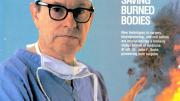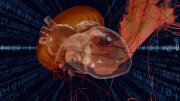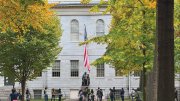Benedict professor of surgery emeritus John F. Burke, M.D. '51, who in 1969 began a long research partnership with MIT professor of mechanical and biological engineering Joannis Yannas ’57 that led to the development of the first commercially reproducible, synthetic human skin—critical in the treatment of burn victims—died on November 2 in Lexington, Massachusetts.
In S.B. Sutton’s 1984 cover story, Harvard Magazine provided background on the work that Burke, Yannas, and other Harvard Medical School researchers were pursuing in their efforts to save the lives of burn victims.









